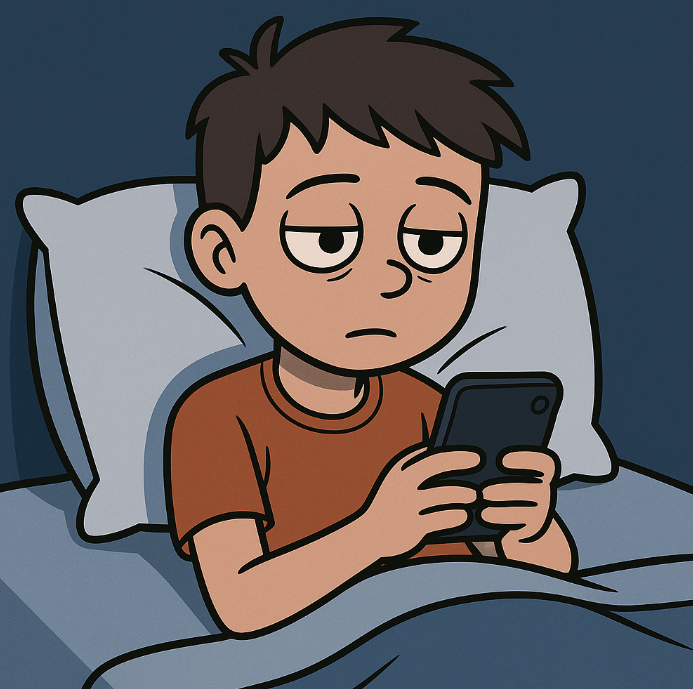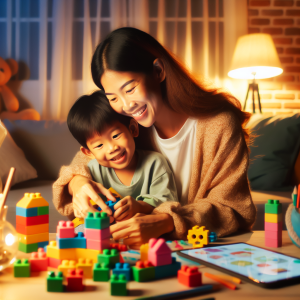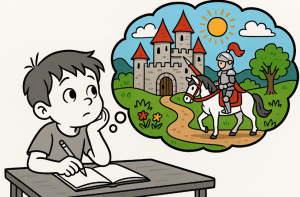
Teens, Tech, and Temptation: The New Face of Addiction
One Spanish teacher noticed something odd during recess: half her class sat on the steps, scrolling silently. The chatter that once filled the courtyard was replaced by glowing screens. When she asked them to put their phones away, one student muttered, “I can’t. I’ll miss something.”
That quiet confession echoes across classrooms worldwide—and it’s not just about phones. A sweeping new study published in Frontiers in Psychology has sounded the alarm: today’s teens face a growing storm of addictions, from alcohol and vaping to video games and social media. Researchers analyzed 41 studies across 15 countries and found a striking pattern—adolescents are trading old vices for new ones, and both are taking a toll on their mental health
The Teenage Brain: Wired for Risk
Adolescence has always been a period of experimentation. The brain’s reward system develops faster than its self-control circuits, creating a perfect recipe for impulsivity. Add in peer pressure and constant digital stimulation, and you get what psychologist Laurence Steinberg once called a “neural hurricane.”
According to the review, the first sip of alcohol typically happens around age 13, and early exposure predicts greater risk later on. Boys tend to drink or gamble for status and excitement, while girls are often driven by social acceptance or stress relief Those early experiences rewire reward pathways, making future self-control even harder.
Tobacco and cannabis follow a similar script. Vapes and edibles—marketed as “safer” or “natural”—mask real danger. Teen users show higher impulsivity, sleep problems, and, over time, cognitive decline. Cannabis users who start young are more likely to develop anxiety, low self-esteem, and antisocial behavior later on.
“Addiction isn’t a single bad choice,” the authors note. “It’s a series of small reinforcements that reshape how young people cope with the world.”
When the Screen Becomes the Substance
While cigarette smoke has faded from school bathrooms, a different dependency glows in every pocket. The review found that one in five teens shows signs of problematic internet use—excessive scrolling, gaming, or social-media checking that disrupts sleep, mood, and relationships.
For girls, phones often serve as emotional lifelines: texting friends, curating selfies, staying “in the loop.” For boys, gaming provides an escape—a place to win, belong, and feel competent. Yet both groups struggle with the same trap: endless digital rewards that mimic the dopamine rush of substances.
Only about a quarter of adolescents in the reviewed studies managed to self-regulate their phone use.. Poor sleep, irritability, and social anxiety were common. Researchers linked heavy screen time to increased risk-taking, cyberbullying, and even greater odds of drinking or smoking.
As one researcher put it, “The phone became both the drug and the dealer.”
The Rise of Behavioral Addictions
Beyond phones, behavioral addictions are blurring the line between play and pathology.
- Video games: Up to 3.5 % of teens meet criteria for gaming addiction. These youth often report loneliness, low self-esteem, and sleep disruption. The thrill of leveling up or winning loot boxes releases dopamine similar to gambling wins.
- Online gambling: Once confined to casinos, betting now lives on apps. Many start between 12 and 13, using digital “skins” or virtual money before moving to cashfpsyg-16-1646746. Boys over 16 are especially vulnerable, drawn by competition and status.
- Social media: Over-comparison and constant connectivity fuel anxiety, depression, and “nomophobia”—the fear of being without one’s phone. Girls aged 12–14 show the highest risk.
These patterns rarely exist in isolation. Many adolescents are poly-consumers, mixing substances with screen-based rewards. A teen might vape between gaming rounds or scroll TikTok to distract from withdrawal. Each behavior reinforces the other, creating a feedback loop of dependence.
Why Schools Are the First Line of Defense
The classroom has quietly become a frontline for mental-health crises. Teachers notice the sleeplessness, zoning-out, and irritability long before parents or clinicians do. The researchers highlight schools as “essential environments for prevention”—places where risky behaviors can be identified early and addressed through education, peer mentorship, and support groups..
Some interventions already work. Peer-led alcohol-awareness programs, where older students model healthy behaviors, boost self-efficacy and reduce drinking. “Digital detox” weeks have shown promise in restoring attention spans and sleep.
Yet the review warns that prevention can’t stop at classroom doors. Family factors—like parental modeling, supervision, and open communication—are critical buffers. Teens who eat dinner with family at least four nights a week, for example, show significantly lower odds of risky use.
Turning Knowledge Into Action
So what can parents and educators actually do with all this data? The study offers several practical takeaways:
- Talk Early, Not Late – Conversations about vaping, gaming, or alcohol should start by middle school, before exposure turns into habit.
- Model Balance – Teens watch how adults manage stress and screen time. Putting your own phone down during dinner sends a stronger message than any lecture.
- Promote Purpose – Youth with goals, hobbies, or volunteer roles are less likely to seek validation through substances or screens.
- Build Peer Programs – Structured, peer-led initiatives can harness social influence for good—teaching refusal skills, empathy, and self-control.
The Bigger Picture: Mental Health, Not Moral Panic
The takeaway isn’t to fear every app or after-school hangout. It’s to recognize that addiction has evolved. The modern teen doesn’t need to sneak out to find risk; it lives in their hand, disguised as a connection.
The authors urge a shift from punishment to prevention, from stigma to support. “Adolescence,” they write, “is not a disease to cure but a phase to guide.”
When parents, teachers, and policymakers see addiction through that lens—as a developmental challenge shaped by biology, technology, and belonging—we stop blaming kids for being kids. Instead, we start helping them grow into adults who can choose balance over burnout.
💬 Let’s Talk About It
- What’s the biggest mental-health challenge you see in schools today?
- How can educators and parents team up to support emotional well-being?
- What digital-use boundary has actually worked for your family or classroom?
Share your thoughts below or tag #ChildMindMatters—because protecting kids’ brains in the age of dopamine is a team effort.



